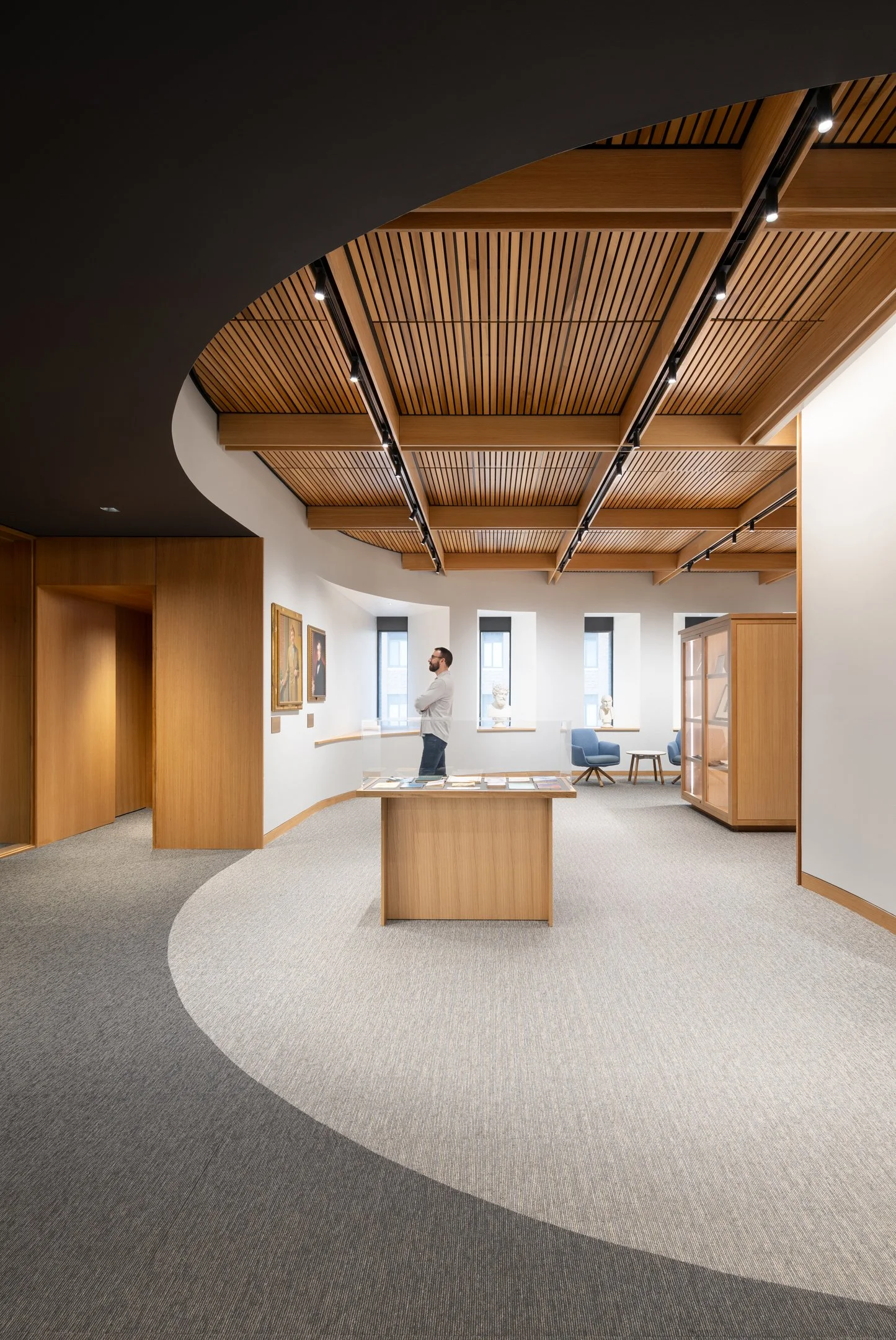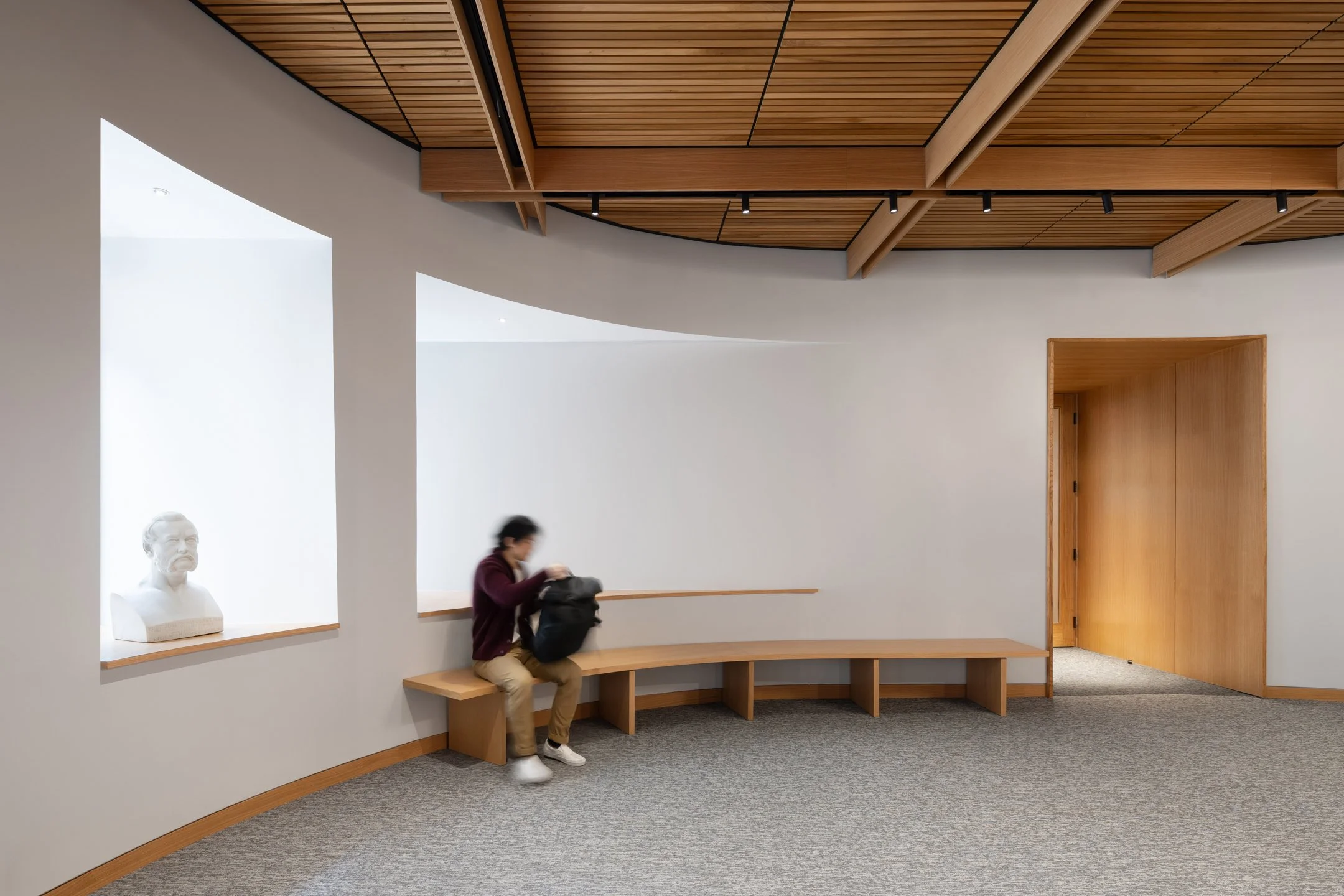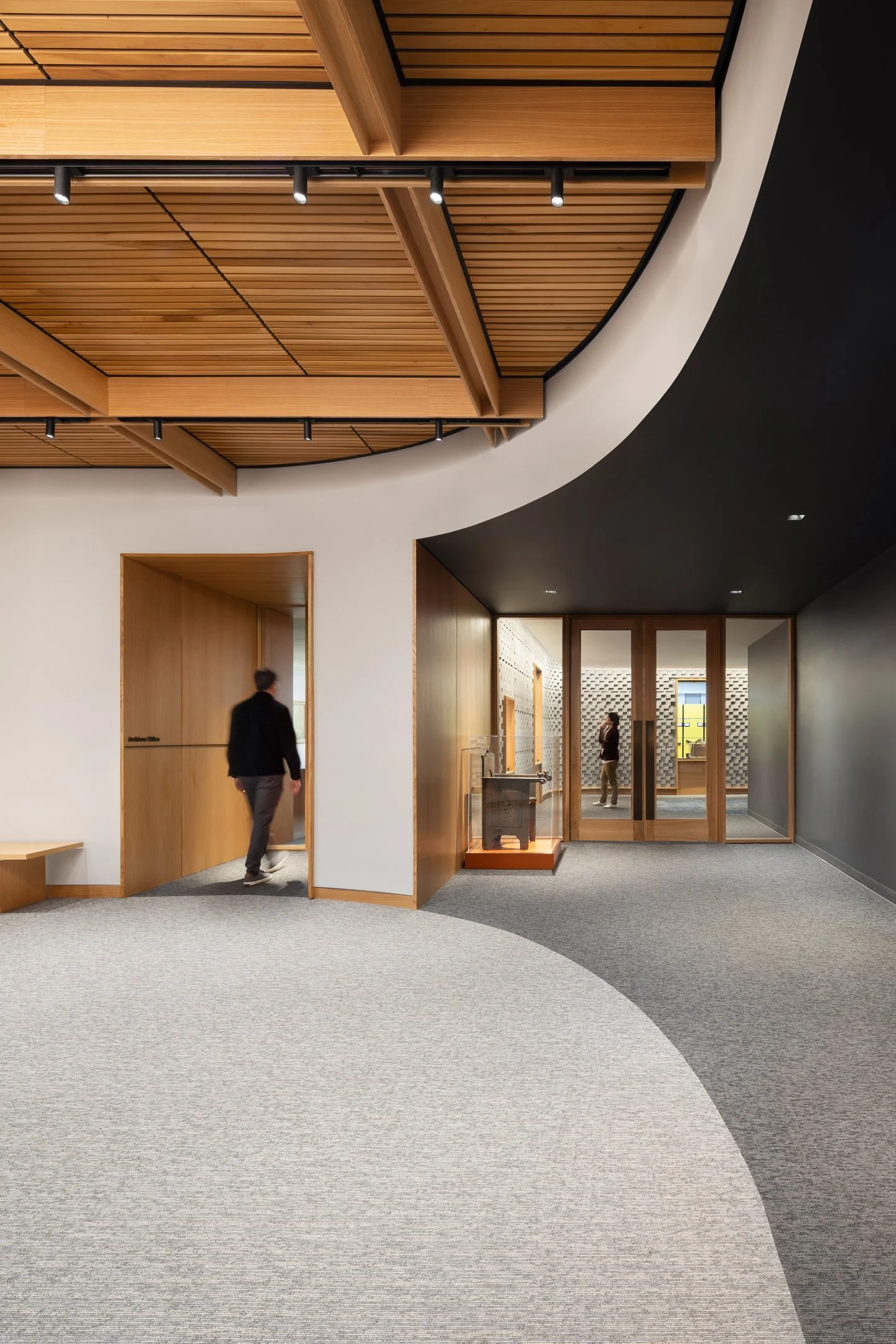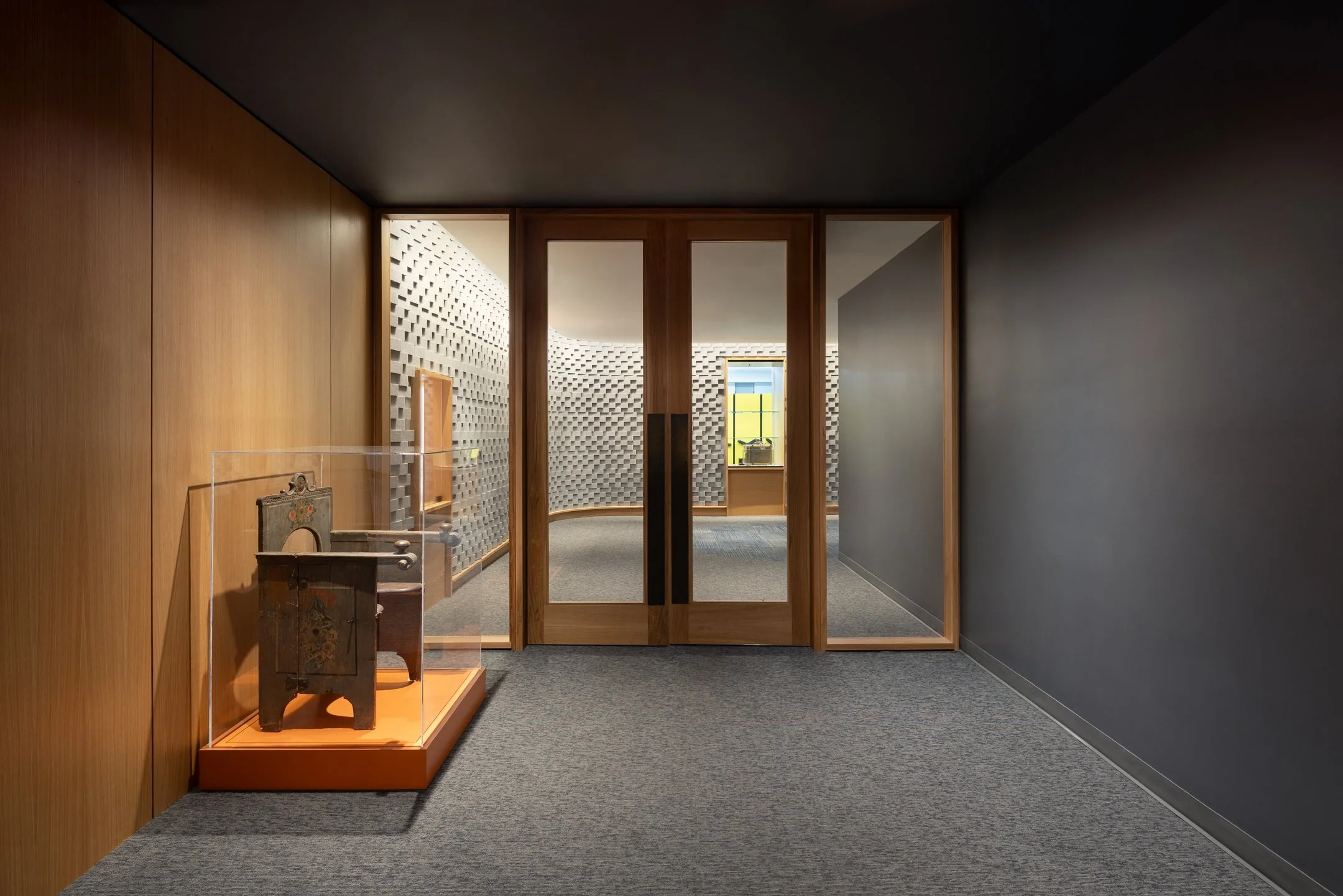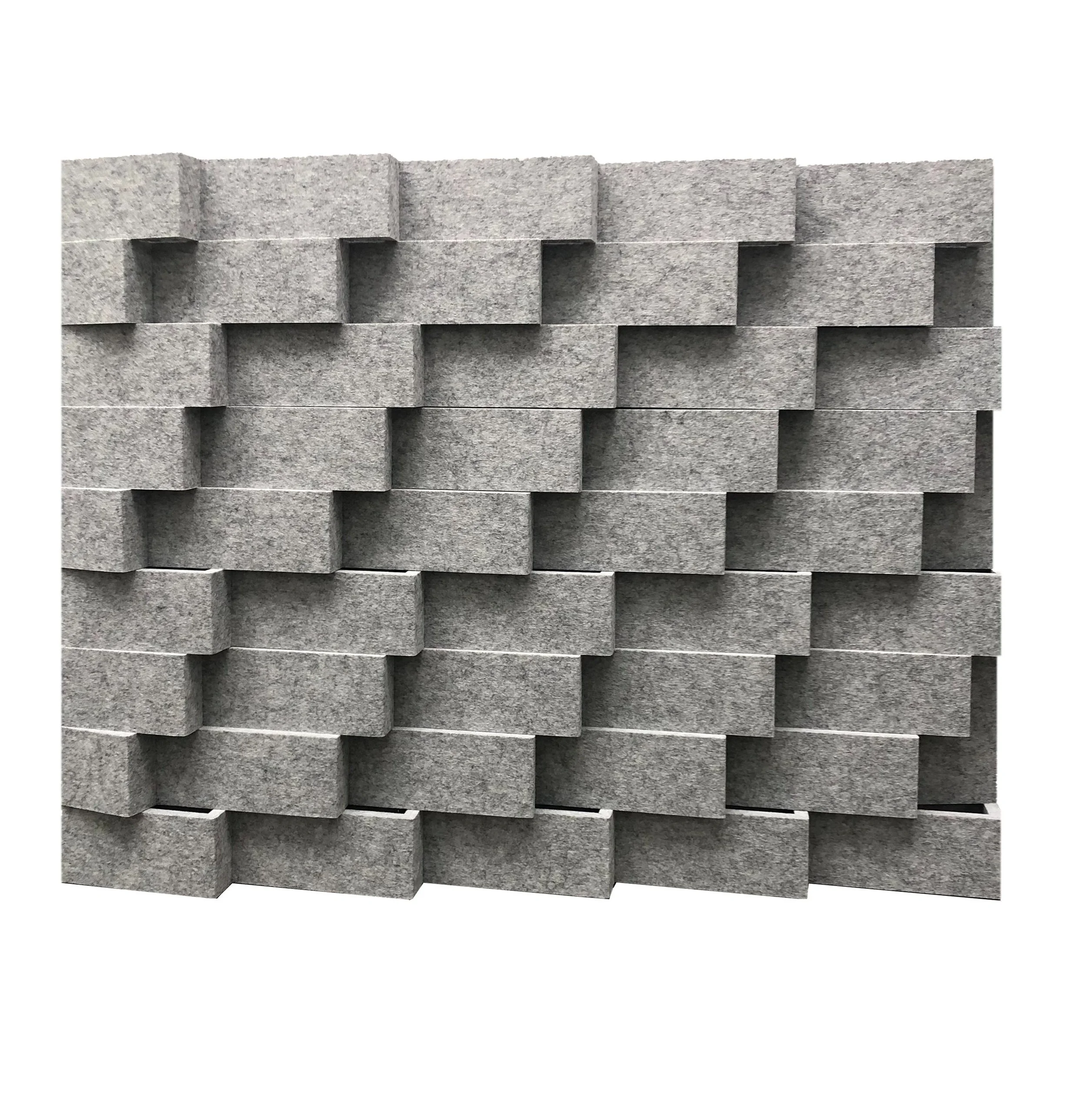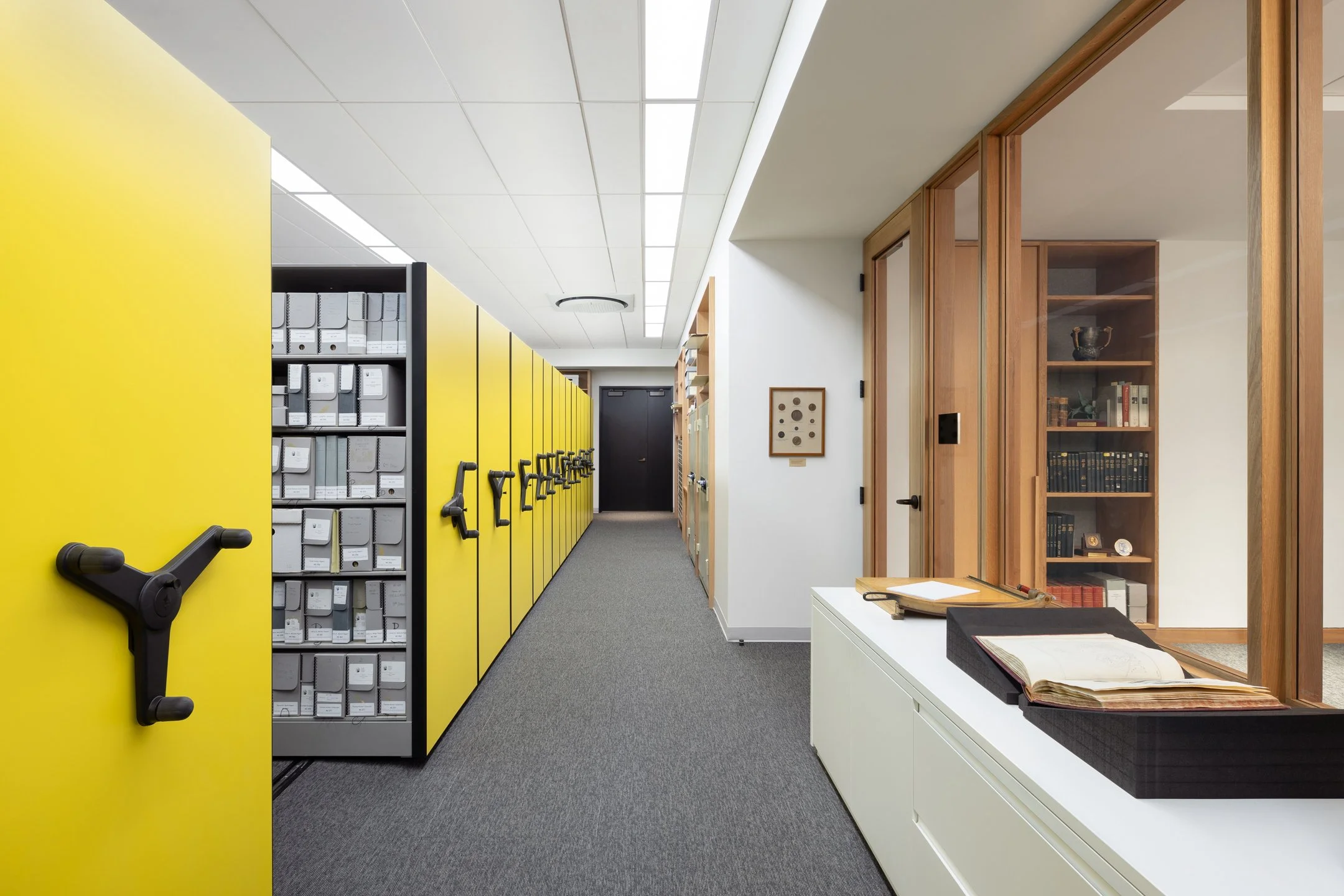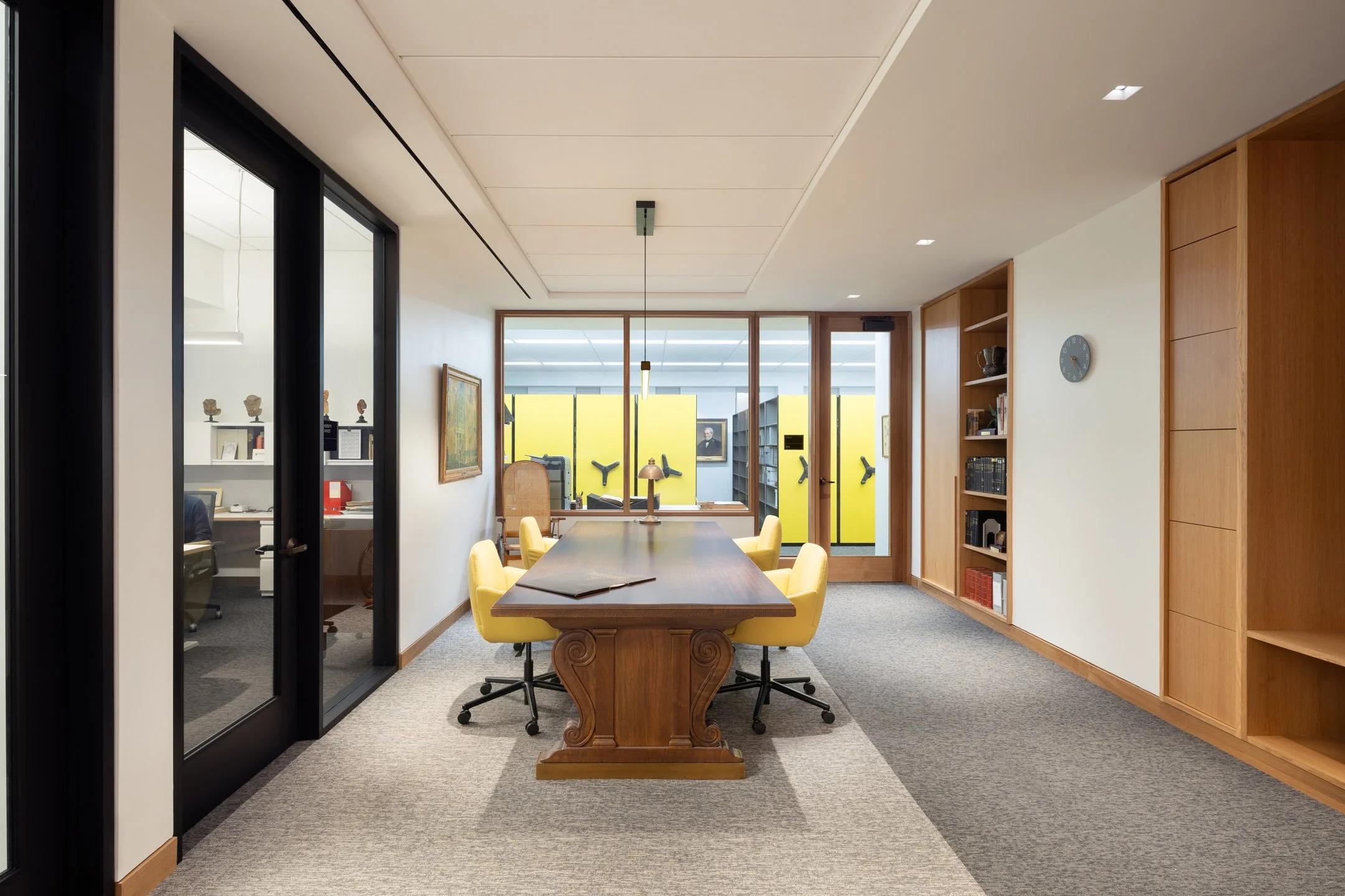Thomas Jefferson University Medical Archives
The health of our communities is shaped by many factors, with education and a reliable healthcare system being among the most critical. To be truly effective, these institutions must reflect the priorities and histories of the communities they serve. At Thomas Jefferson University, the medical school identified an untapped resource in their curriculum for future healthcare professionals in Philadelphia—a historic archive of texts, drawings, and artifacts. Previously housed in a secure, enclosed room accessible only to scholars and research staff, this Collection’s valuable knowledge and insights remained isolated from modern pedagogical practices.
With funding from a leading researcher and professor at the medical school, the University set out to integrate these stories and artifacts into its educational environment. The new Archives were conceived to empower faculty to enrich their teaching not only with the content of historic texts but also with the physical objects that illuminate the origins of medical advancements.
The space is organized into four primary components:
• The Chamber: A central exhibition space located directly off the main elevator core, serving as a gathering area and providing a venue for curated exhibitions exploring specific aspects of medical history.
• The Forum: A flexible classroom designed to facilitate collaborative teaching between the Archives and medical school faculty. Equipped with a suite of digital tools, the Forum balances modern technology with the analog experiences of the Collection, allowing students to engage closely with artifacts.
• The Vault: A secure, quiet research space serving as the core of the Archives, with high-density shelving to protect both current holdings and future acquisitions.
• The Medicine Cabinet: This “façade” of the Archives faces a large, quiet study area. It features a custom-designed acoustic art wall with embedded display cases, immersing students in narratives from the history of medicine as they study and reflect.
The revitalized Archives aim to ground future medical practitioners in the successes, failures, and evolution of medicine over the past millennium. By doing so, they create a deeper connection between students and the Philadelphia medical community, fostering a more informed and empathetic generation of healthcare professionals.
Philadelphia, PA
Completed Fall 2024
The two sides of the Chamber are organized around an oversized exhibition wall that anchors the center of the space and establishes a clear curatorial focal point. At this axis, the uniform grid of windows is strategically deepened to create sculptural niches, housing a collection of plaster busts and enriching the room’s dialogue between architecture and artifact.
Within the “Chamber,” deep-set window sills are repurposed as niches for displaying sculptural busts from the Collection, subtly integrating artifacts into the architectural fabric. A structural column, rather than being concealed, is absorbed into the design through a widened, curved wall enclosure—transformed into a vertical display case for historic surgical instruments, seamlessly merging structure with storytelling.
The common corridor of the Library is called the “Medicine Cabinet” and is a interplay of acoustic surfaces and recessed display cabinets.
The “Medicine Cabinet” acoustic art wall is nearly one hundred feet long and extends along the east and west sides of the Archive. It is interrupted by a pair of double glass doors creates and acoustic boundary between the solitary study spaces and the more active exhibition spaces within the Chamber.
The walls of the archive face an existing quiet study room. Studio Modh developed a texture of folded PET panel strips forming an absorptive/disruptive acoustic surface that nods to the exterior brick details of the existing library. Display cases of varying sizes are incorporated into the wall. The team worked with a manufacturer to develop a minimum number of panel modules with enough variation to create a comprehensive sculptural whole.
The “Vault” supports student and scholarly engagement with the University’s archival collection, balancing accessibility with security. Clear sightlines were integral to the design, ensuring visual oversight while maintaining an open, inviting atmosphere. A vibrant yellow finish enlivens the high-density shelving system, which was strategically placed to align with structural load capacities. One display case within the Medicine Cabinet features a glass back, offering a framed glimpse into the bright yellow core of the Archives—a visual anchor and symbolic heart of the collection.
The “Forum” is conceived as a luminous, hybrid space that seamlessly supports both analog and digital modes of learning for visiting faculty and students. Mobile, custom-designed display cases allow staff to bring archival objects directly into instructional settings, fostering hands-on engagement. Faceted window apertures gently diffuse natural light, while a continuous light cove—set atop soft gray walls—casts an even glow across the ceiling, enhancing the ambient quality of the room.
Photography by Devon Banks Photography
Back to Institutional Work

